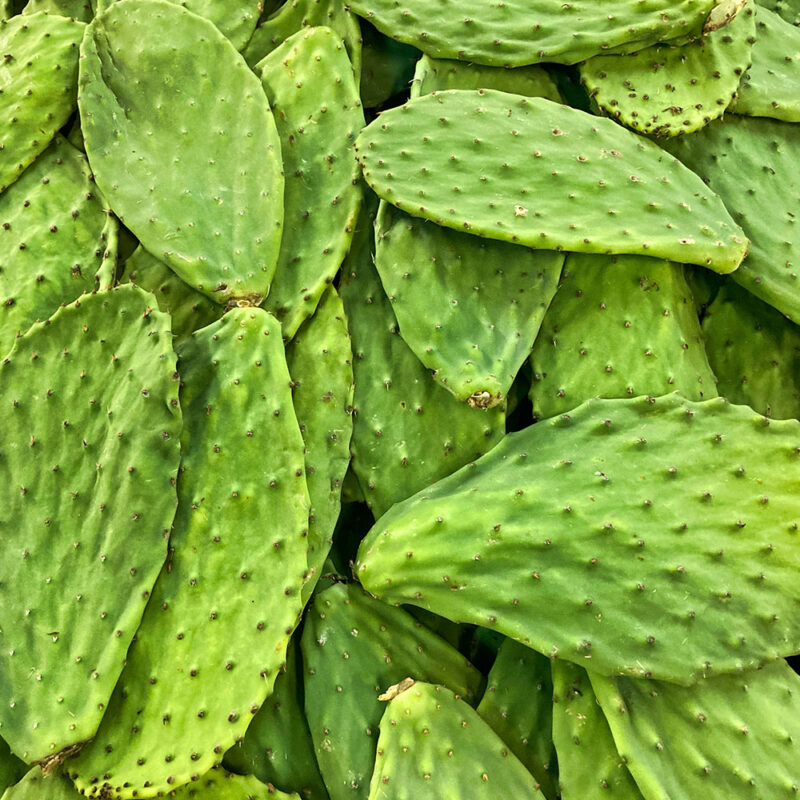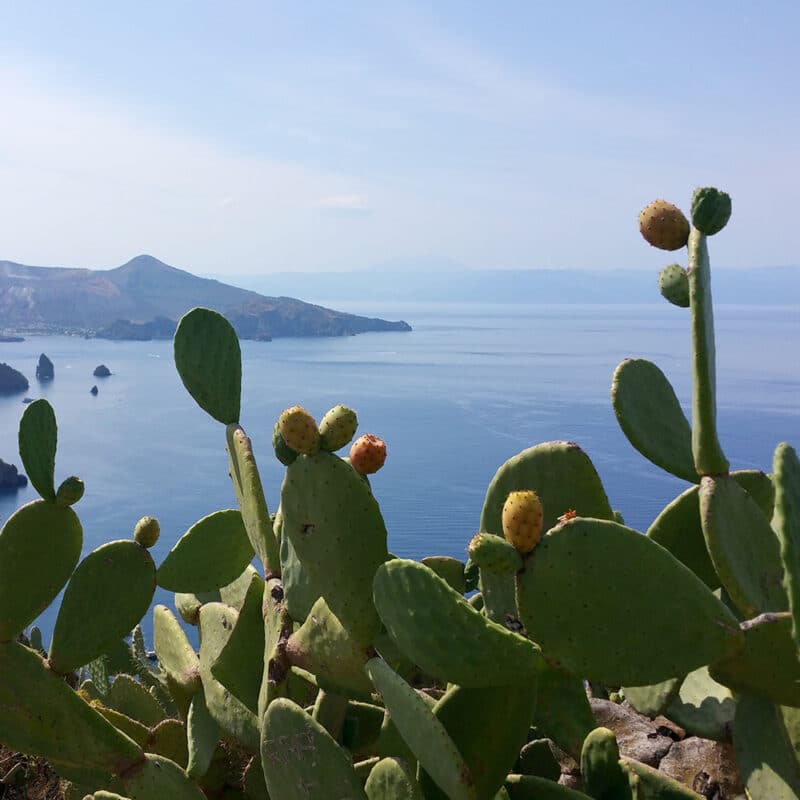Where do the Ficomore cladodes come from?
A virtuous and circular supply chain which turns waste into resources
Opuntia ficus indica from Ficomore naturally grows in the Sicilian countryside, or it’s organically cultivated in order to obtain the tasty and juicy fruits (Sicily is one of the cactus fruits world’s biggest producers). After the fruit is harvested, the prickly pear cactus is pruned and the excessive cladodes are removed, which were originally a waste product hard to dispose of.
An example of circular economy
Ficomore project has its roots well anchored on the useful elements of this waste element. Cladodes represent much more than an attractive product; they are the engine of a sustainable, zero waste supply chain, the beginning of a new production cycle and a new business opportunity for local farmers based on rural areas. A perfect example of bioeconomy and circular economy promoted by the European Union.
From the dry areas of Southern Europe
The scientific name of the prickly pear is Opuntia Ficus Indica, a plant belonging to the cactus family and it originates from Central America and got acclimatized to the Mediterranean area many centuries ago.
It takes root almost anywhere, and it’s very tolerant of drought which helps the environment mantain green spots and precious water reserves even in the driest areas. This plant is actually able to vigorously grow even where precipitation is less than 400 mm/year and survives in the driest places. Its tentacle roots detect even the smallest source of water and at the same time protect the soil from the erosion.
Prickly pear plant shows a great ability to self-regenerate: a single cladode spreads into many cladodes with its own resources.
The Aztecs considered the prickly pear a sacred plant and nowadays the pads (nopales) represent a basic food for Mexicans: they are used in a variety of sweet and savory dishes (tortillas, salads) and drinks. They are so important in their culture up to the point that a prickly pear cactus is represented in the Mexican flag!
From the roots of the Mediterranean culture
Opuntia ficus indica spontaneously grows in Southern Italy, and specifically in Sicily, Ficomore’s home. For many centuries, this cactus has been constantly populating the most charming landscapes of the island, from the sunny countryside down to the beaches.
Sicilian farmers have traditionally cultivated the plant around their properties to protect their homes from fires during the driest months of the year (prickly pear is 90% made of water) and they used the mucilage to help heal scars and burns.
With its insidious thorns in contrast to the deep green of its cladodes, these large, florid and sinuous branches-leaves are symbolic of Sicily: seemingly repulsive and hostile, they have a richness yet to be discovered.




